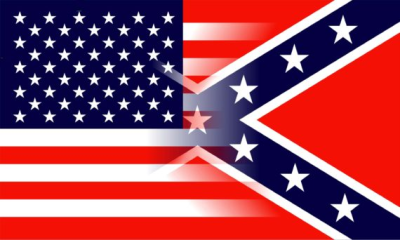About Publications Library Archives
heritagepost.org

Preserving Revolutionary & Civil War History

Preserving Revolutionary & Civil War History

I have organized this presentation into several parts:
All references to “Official Records” are to US War Department, “the War of the Rebellion: A Compilation of the Official Records of the Union and Confederate Armies, – Washington DC Government Printing Office, 1877 – 1902, hereafter cited as “Official Records.”
DEFINITION OF MILITARY CONDUCT as UNDERSTOOD PRIOR and DURING the CIVIL WAR / the CONCEPT OF TOTAL WAR / the LIEBER CODE.
The Civil War is often thought of as the first conflict to be fought as a modern Total War; that is, a war that knew no boundaries, no rules, no exceptions, and no mercy; a war where all atrocities and all criminality was covered over by the concept of “military necessity” in pursuit of the over-riding objective: achieving a complete and total victory over the enemy defined as the annihilation of the enemy.
Brutality – towards civilians, prisoners, slaves, and hostages in war is as old as Mankind. Ancient warfare is filled with examples where civilians were routinely mass murdered and History is replete with atrocities committed by those like Attila the Hun, Genghis Kahn and Timur, who burned cities and left mountains of civilian skulls in their wake.
Warfare in Europe was not much better; the 30 Years War of the 1600s was filled with atrocities against civilians and massive destruction of property.
However, by the time of the Enlightenment through the 18th and early 19th Century, Western warfare, especially in Anglo-American culture, attempted to reign in some of the more egregious aspects of war as it pertained to civilians and civilian property.
As Lance Janda writes in his article “Shutting the Gates of Mercy: The American Origins of Total War, 1860 – 1880” the Journal of Military History #59, no. 1 (January 1995) the attempt to provide some protections to civilians stemmed from the Enlightenment desire “which stressed that violence against non-combatants was barbaric and unworthy of modern military forces.”
Of course, despite such progressive ideas, individual commanders in the field still issued orders, and soldiers often engaged in brutal conduct against civilians in Anglo-American warfare. We saw this in our own country during the American Revolutionary War when the British Legion under Col. Banastre Tarleton whose troops killed over a hundred prisoners during the so-called Buford Massacre in Virginia as well as numerous other acts of cruelty toward the civilian population.
Further, American treatment of Native American tribes, such as Andrew Jackson’s treatment of the Creeks and Seminoles, were hardly known for their gentle treatment of non-combatants. However, what we find during the Civil War is a departure from the growing concept that such predations were to be curbed and discouraged. Instead, we find that official policy, fully sanctioned by the highest levels of the military command of the Federal forces commanded by President Lincoln and in concurrence with the policy set by the highest echelons of the civilian leadership enthusiastically engaged in the type of war crimes that are implicit in the conduct of a “Total War.”
We must ask ourselves how this concept of Total War was seen by both sides during the Civil War and understand how this concept differed from previous conceptions of what was considered proper warfare.